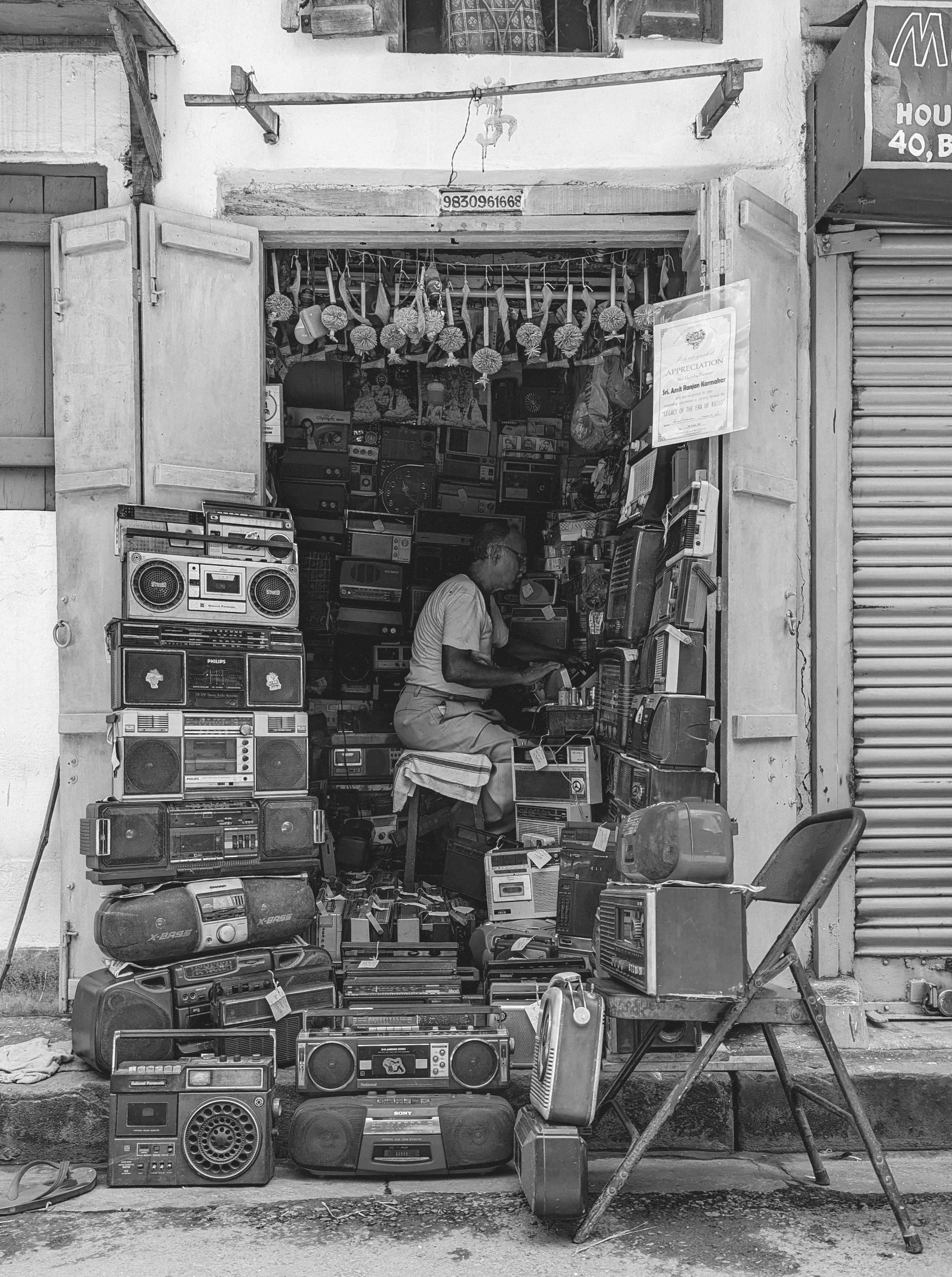What Does DNI Mean on Twitter
DNI, or “Do Not Interact,” is a common acronym used on Twitter to indicate that the individual does not want to engage or interact with certain types of content or individuals. DNI statements can be found in user bios or tweets, and they are often used to create safe spaces for users to express themselves without fear of harassment or discrimination.
So, next time you come across “DNI” on your timeline, you’ll know exactly what it means!
For more in-depth insights and valuable tips, don’t miss out on our previous articles—ranked highly by Google for their relevance and quality.
1. DNI Definition on Twitter
1.1 Basic Meaning of DNI on Twitter
DNI stands for “Do Not Interact” on Twitter. It is a term used to indicate that a user does not want to engage or interact with certain individuals or communities on the platform. When someone includes DNI in their Twitter bio or tweets, it serves as a clear message to others that they prefer not to receive any interactions, such as replies, mentions, or direct messages, from specific groups of people. DNI is a way for users to establish boundaries and communicate their preferences for online interactions on Twitter.
1.2 Origin and Background of DNI on Twitter
The concept of DNI originated within online communities as a means to create a safe and inclusive space for individuals. It gained prominence on Twitter as users found it necessary to establish personal boundaries and protect their mental well-being on the platform. DNI became a way for users to express their desires to avoid engaging with specific individuals, groups, or topics that may be triggering or harmful to them. This practice gained traction and has since become an important aspect of online communication on Twitter.
2. DNI Features and Functionality
2.1 Displaying DNI on Twitter Profiles
Twitter users can include DNI in their profile bio to indicate their preference of not being interacted with by certain individuals or communities. It typically appears as a short phrase or acronym within the bio section. Some users also incorporate hashtags related to DNI topics to further convey their preferences. By displaying DNI on their profiles, users can actively communicate their boundaries and expectations to others who come across their Twitter account.
2.2 Usage of DNI in Tweets
In addition to including DNI in their profile, users can also incorporate it within their tweets to specify certain topics or conversations they wish to avoid. By mentioning DNI in a tweet, individuals can communicate their preference to not be involved in discussions related to sensitive subjects or with specific individuals. This helps to filter out unwanted interactions and keeps conversations focused on the desired topics or participants.

This image is property of images.pexels.com.
3. Significance and Implications of DNI on Twitter
3.1 Promoting Transparency and Authenticity
DNI plays a crucial role in promoting transparency and authenticity on Twitter. By clearly stating their preferences and boundaries, users can avoid engaging with content or individuals that may compromise their well-being or go against their values. It allows users to maintain control over their online experience and ensures that only desired interactions take place. This transparency supports the creation of a more authentic and genuine Twitter environment.
3.2 Fostering Trust and Credibility
The presence of DNI on Twitter profiles and tweets helps foster trust and credibility within the platform. When users clearly communicate their boundaries, it reduces the likelihood of inappropriate or unwanted interactions. It also helps build trust among followers and shows that the user is actively taking steps to prioritize their well-being and maintain a safe online space. This can lead to more meaningful connections and interactions between users who respect and honor each other’s DNI preferences.
3.3 Combatting Fake News and Misinformation
DNI can also play a role in combatting fake news and misinformation on Twitter. By indicating their preferences and boundaries, users can curate their online experiences to avoid engaging with accounts or content that share false or misleading information. This empowers users to filter out unreliable sources and promotes a more informed and accurate Twitter ecosystem. DNI serves as a tool for users to protect themselves against the spread of misinformation and ensure that they are engaging with reliable and trustworthy information.
4. DNI and Verification Processes on Twitter
4.1 Verification Badges and DNI
Twitter’s verification badge system is separate from DNI practices. Verification badges are used to authenticate the identity of Twitter users who are deemed to be of public interest or hold significant influence in specific domains. These badges appear as a blue checkmark next to the user’s name, indicating that their account has been verified by Twitter. DNI, on the other hand, is a personal preference and does not require verification from Twitter.
4.2 DNI Criteria for Verification on Twitter
Since DNI is a personal preference, it does not have specific criteria for verification on Twitter. It is up to each individual user to define their DNI boundaries and communicate them to others. Verification, however, has its own criteria set by Twitter, which include factors such as account completeness, adherence to Twitter rules, and evidence of being active and notable within a particular field. Verification is not a requirement for using or expressing DNI on Twitter.

This image is property of images.pexels.com.
5. DNI Challenges and Criticisms
5.1 Privacy Concerns and DNI
One of the challenges associated with DNI on Twitter is the potential invasion of privacy. While it serves as a way to establish boundaries, it also provides information to others about what topics or individuals a user may find triggering or upsetting. This can open the door for targeted harassment or harmful behavior by those who wish to intentionally provoke or harm individuals who have expressed their DNI preferences. Users should be mindful of their privacy settings and ensure their DNI preferences do not compromise their safety.
5.2 Accuracy and Reliability of DNI
Another criticism of DNI revolves around its accuracy and reliability. Since it is a personal preference, there is no standardized way to verify if someone genuinely adheres to their stated DNI boundaries. This can create confusion or skepticism among users who may question the legitimacy of someone’s DNI claims. It is important for individuals to be transparent and consistent with their DNI preferences to maintain trust and credibility among their followers.
6. Case Studies and Examples of DNI on Twitter
6.1 Successful Use Cases of DNI on Twitter
There are numerous successful use cases of DNI on Twitter where users have effectively communicated their boundaries and created safe online spaces. For example, activists and advocates for mental health often include DNI in their profiles to indicate that they do not wish to receive triggering content related to self-harm or suicide. Similarly, individuals who prioritize inclusive conversations may include DNI preferences related to discriminatory language or hate speech. These successful use cases demonstrate the importance of DNI in creating a supportive and respectful online environment.
6.2 Notable Instances and Controversies Regarding DNI
While DNI can be a valuable tool, there have been instances where its usage has sparked controversy. Some individuals have criticized the concept, arguing that it may contribute to an echo chamber effect and hinder open dialogue. Others have questioned the validity of certain DNI claims, raising concerns about its potential misuse as a way to avoid accountability or shield oneself from criticism. These controversies highlight the need for ongoing discussions and considerations surrounding the appropriate use and interpretation of DNI on Twitter.

This image is property of images.pexels.com.
7. Future Trends and Development of DNI on Twitter
7.1 Integration of Advanced Technologies
As technology continues to advance, there is potential for the integration of advanced tools and features that could enhance the functionality and effectiveness of DNI on Twitter. Machine learning algorithms, for example, could be utilized to detect and filter out unwanted interactions based on a user’s DNI preferences. This could help streamline the process of curating a personalized Twitter experience while minimizing the risk of exposure to harmful or triggering content.
7.2 Collaboration with Fact-Checking Organizations
To further combat fake news and misinformation, Twitter could explore collaborations with reputable fact-checking organizations. By integrating fact-checking information into the DNI mechanisms, users could receive alerts or notifications when engaging with content that has been flagged as inaccurate or misleading. This would help users make informed decisions about the credibility of the information they consume and share on the platform.
8. Recommendations for Twitter Users Regarding DNI
8.1 Verifying DNI of Sources
When engaging with content on Twitter, it is important to verify the DNI preferences of the sources to ensure respectful and appropriate interaction. Take the time to review a user’s profile, bio, and tweets to understand their boundaries before engaging with them. Respecting others’ DNI preferences creates a more inclusive and considerate online environment.
8.2 Reporting Suspicious Accounts
If you come across accounts that are intentionally disregarding or violating DNI preferences, it is important to report them to Twitter. Reporting helps maintain the integrity of the DNI system and ensures that users can express their preferences without fear of harassment or retribution. By reporting suspicious accounts, you contribute to protecting the safety and well-being of Twitter users.
FAQ for “What Does DNI Mean On Twitter”
Q: What does DNI mean on Twitter?
A: DNI stands for “Do Not Interact.” It is a term used by Twitter users to indicate the types of content or users they do not want to see or interact with.
Q: What does DNI stand for slang?
A: DNI stands for “Do Not Interact” in slang. It is used in a variety of online communities, including Twitter, to indicate that someone does not want to interact with certain types of content or users.
Q: Why do people put DNI?
A: People put DNI in their bio to protect themselves from seeing or interacting with content or users that they find upsetting or triggering.
For example, someone who has been a victim of sexual assault may put DNI in their bio to indicate that they do not want to see tweets about sexual assault.
Q: What is a OOMF on Twitter?
A: OOMF stands for “One Of My Followers.” It is a term used on Twitter to describe someone who follows you but you do not follow back.
Q: What is DNI and BYF?
A: DNI and BYF stand for “Do Not Interact” and “Be Your Forewarned,” respectively. DNI is used to indicate the types of content or users someone does not want to see or interact with, while BYF is used to warn people about the types of content they post.
For example, someone who posts about politics and social justice issues may put BYF in their bio to warn people that their tweets may be triggering for some people.
Q: What is a DNI TikTok?
A: A DNI TikTok is a TikTok video that lists the types of content or users the creator does not want to see or interact with.
DNI TikToks are often used by creators to protect themselves from harassment and to create a safe and inclusive space for their viewers.
Q: What is DNI in discord?
A: DNI in Discord is the same as DNI on Twitter. It is used by Discord users to indicate the types of content or users they do not want to see or interact with.
Q: What do I put in my DNI?
A: You can put anything you want in your DNI. It is important to be as specific as possible so that people know what to avoid.
Some common things to put in a DNI include:
- Types of content: violence, gore, sexual assault, homophobia, transphobia, racism, etc.
- Types of users: minors, NSFW accounts, pro-ana or pro-mia accounts, etc.
You can also put a link to a more detailed DNI in your bio.
9. Conclusion
DNI on Twitter serves as a valuable tool for users to express their preferences, establish boundaries, and create safe online spaces. It promotes transparency, fosters trust and credibility, and aids in combating fake news and misinformation. While there are challenges and criticisms associated with DNI, Twitter users can navigate these by being mindful of privacy concerns, maintaining transparency, and respecting others’ stated preferences. As technology and collaborations with fact-checking organizations evolve, the future of DNI on Twitter holds potential for enhanced functionality and increased accountability. By following recommendations and practicing respectful engagement, Twitter users can contribute to a more inclusive and authentic online community.
For more expert insights and valuable tips, don’t miss out on our previous articles. – trusted and recognized by Google for their relevance and quality.

My name is Abdukhakim Kholboev. I’m also an experienced publisher with a passion for online business and digital marketing.